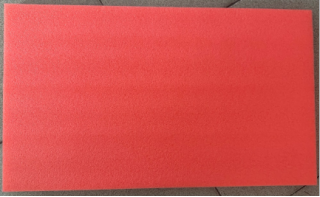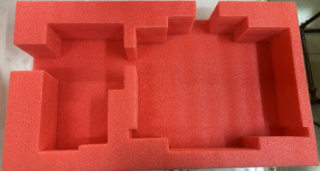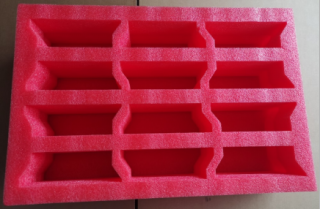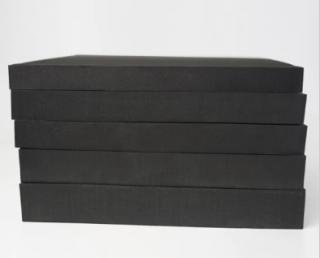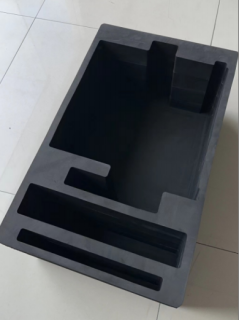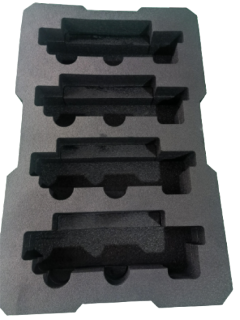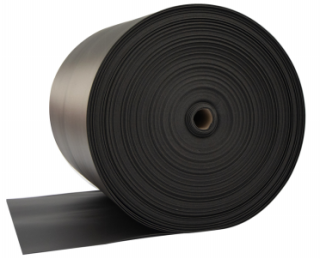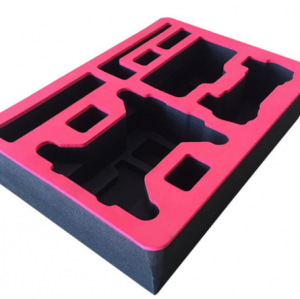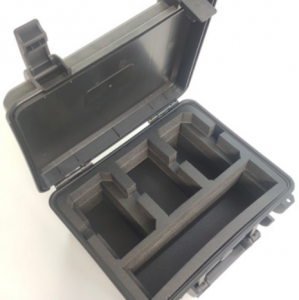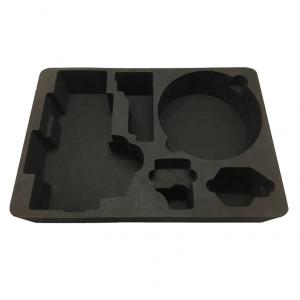Anti-Static PE Foam Selection Guide
------Core Differences and Application Scenarios of EPE, EVA, and IXPE
1. Basic Characteristics Comparison
|
Property |
EPE FOAM |
EVA FOAM |
IXPE FOAM |
|
Material Composition |
Expanded Polyethylene |
Ethylene-Vinyl Acetate |
Cross-linked Polyethylene |
|
Density |
25-30kg/m³ |
60-65kg/m³ |
40-45kg/m³ |
|
Anti-Static Performance |
0^9-10^11Ω |
10^5-10^9Ω |
10^5-10^9Ω |
|
Color |
Red |
Black |
Black |
|
Surface Texture |
Soft, |
Soft, |
Smooth, |
|
Compressive Strength |
Low |
High (impact-resistant) |
High |
|
Temperature Range |
-40~80℃ |
-50~100℃ |
-60~120℃ |
2. Core Differences Analysis
(1). EPE Foam (Expanded Polyethylene)
- **Advantages**:
- Lightweight and soft (density 25-30kg/m³), excellent cushioning and shock absorption, suitable for protecting fragile items.
- Low cost, ideal for large-scale packaging needs.
- **Limitations**:
- Short anti-static lifespan (3-6 months), prone to deformation under long-term pressure, not suitable for heavy-duty stacking.
- **Recommended Applications**:
✅ Packaging for electronic products (e.g., phones, tablets) during shipping.
✅ Temporary anti-static packaging for lightweight instruments.
✅ Budget-sensitive applications with short-term anti-static needs.
(2).EVA Foam (Ethylene-Vinyl Acetate)
- **Advantages**:
- Higher density (60-65kg/m³), balanced elasticity and firmness, wear-resistant, tear-resistant, and can be customized into complex shapes.
- Permanent anti-static (10^5-10^9Ω), excellent waterproof and moisture-proof properties.
- **Limitations**:
- May shrink slightly at high temperatures and degrade with prolonged outdoor exposure.
- **Recommended Applications**:
✅ Precision instrument linings (e.g., cameras, optical equipment).
✅ Custom anti-static inserts for toolboxes.
✅ Industrial applications requiring both cushioning and support.
(3). IXPE Foam (Cross-linked Polyethylene)
- **Advantages**:
- Moderate density (40-50kg/m³), closed-cell structure, strong pressure resistance, and long-term durability without deformation.
- Permanent anti-static (10^5-10^9Ω), resistant to high/low temperatures and corrosion, with stable anti-static performance.
- **Limitations**:
- Higher cost and more complex manufacturing process.
- **Recommended Applications**:
✅ Long-term storage of high-end electronic components (e.g., chips, circuit boards).
✅ Packaging for medical devices and aerospace precision instruments.
✅ Anti-static needs in high-temperature/humidity environments.
3. Selection Decision Tree
(1). Is your usage environment harsh?
- High temperature/humidity/corrosive environments → **IXPE**
- Normal environments → Choose **EPE** or **EVA** based on budget and load requirements.
(2). Do you need long-term anti-static performance or repeated use?
- Long-term anti-static → **EVA** or **IXPE**
- Short-term anti-static (3-6 months) → **EPE**
(3). What is your budget priority?
- Cost-sensitive → **EPE**
- Balanced cost-performance → **EVA** or **IXPE** (similar prices, choose based on processing method)
4. Summary Recommendations
- **EPE**: Economical and practical, suitable for lightweight, short-term protection with limited anti-static lifespan (3-6 months).
- **EVA**: Versatile and durable, permanent anti-static, ideal for medium-pressure and customized needs.
- **IXPE**: High-end and long-lasting, permanent anti-static, suitable for harsh environments and long-term protection.
-**Price Note**: EVA and IXPE materials are similarly priced, but specific costs depend on processing methods and market supply-demand dynamics. Choose based on actual needs.
For further sample testing or technical consultation, please contact our team!
Company: Yufa Polymer Products Co., Ltd.
Email: info@yufapolymer.com
Website: www.yufapolymer.com
